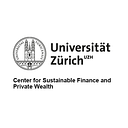Blended and Innovative Finance — Going Beyond the Buzzwords
Blended finance is the innovative use of public and philanthropic funding to crowd in private capital for the financing of sustainable development. Despite the novel approach, blended finance can act as a major bridge between investment gaps in sustainable development and private and institutional investors looking for a way to do good while doing well.
Essentially, the mechanism allows public and philanthropic institutions to increase the incentive for commercial investors to invest by decreasing the risk of given investments.
In our webinar, Taeun Kwon, Head of Wealth Manager Programs and research lead of blended finance at CSP, breaks the topic down into three easily digestible parts: the basics of blended finance, an overview of innovative finance, and how the two work.
Taeun is joined by Rory Tews, Program Manager at Roots of Impact, who introduces a results-based finance approach called Social Impact Incentives, or SIINC. SIINC is a model developed by Roots of Impact and aims to reward social enterprises for the positive impact they create, as well as their scalability and profitability. The model incentivizes enterprises to think big and push for markets driven-solutions without compromising their mission. This mechanism has enabled enterprises like Clinicas del Azucar, a chain of diabetes treatment centers in Mexico, to become profitable while providing treatment to tens of thousands of patients representing the poorest communities in Mexico.
Watch the full recording to understand how this finance mechanism works and why it can act as a lever in closing the looming financing gap keeping us from reaching the Sustainable Development Goals.
The full discussion can be found below
Webinar clips and a brief overview of the webinar
Definition of Blended Finance as per the webinar: https://youtu.be/m1KET-TcIyc
Definition of Innovative Finance as per the webinar: https://youtu.be/KqQIhgJnVqY
You can listen to the discussion here:
Highlights from the Q&A
1. The SIINC model pays or reimburses outcomes. How can you be sure that you’re paying exactly the amount of money that should be paid for a specific outcome?
Rory: It is practically impossible to be 100% sure that what you pay represents the actual “price” of the outcome. We don’t have the data available to be able to judge exactly what the level of concessionality should be for a given outcome. Roots of Impact and the CSP are currently putting in a proposal to generate a “Development Finance Additionality Index,” which we hope to build out over time in order to answer this question across geographies and sectors.
But to sum up, the question is currently difficult to answer on an individual basis, but can be evaluated on an aggregate basis to compare projected impact growth with and without intervention. However, we need more data to determine the impact that different forms of capital and mechanisms generate.
2. How can you verify the positive impact or results of the enterprise?
Rory: This is different for different cases, but we generally do an in-depth analysis of the data generated by the enterprises. In the case of Clinicas del Azucar, we sent a researcher into the field to do an in-depth analysis of the clients of the enterprise. The researcher also analyzed databases of enterprise and remodeled results that the enterprise had generated to check for accuracy.
Taeun: Verifying results is important, but can also be quite costly, especially when you are mandating a third party. The general rule of thumb is the same as with impact measurement; the results should be metrics that help the entrepreneur understand and manage the business better, so that there is little incentive to report inflated results.
3. Do you have other examples, including other financial instruments, that can be used for blended and innovative finance?
Rory: This is something we’ll be working on with Taeun under the Initiative for Blended Finance. What we consider relevant is impact-linked finance, of which SIINC is one form. However, it is conceivable to construct any financial instrument with an impact-linked component in it. For example, a loan can be given with an impact-linked interest rate, where the interest rate decreases based on outcome performance, even getting into negative interest rates.
Taeun: For de-risking mechanisms, Convergence offers a good overview of different instruments and has a database for its members. There is less of a comprehensive research done on the side of increasing return or linking financial return to impact. There are the well known impact bonds, but there are many other mechanisms with impact-linked components popping up here and there, and like Rory mentions, we are working on putting together an overview of this. Feel free to reach out to us in case you would like to discuss this.
Upcoming webinars
May 14th at 15:00–16:00 CEST
Dr. Julian Kölbel & Florian Heeb: Changing the world as an investor — what to do and what not to do
Register: https://zoom.us/webinar/register/WN_CYq-k0CSRmCYOCALl3Hyqw
May 21st at 17:00–18:00 CEST
Antonis Schwarz & Romy Kraemer: Impact through funding social movements and activists
Register: https://zoom.us/webinar/register/WN_Eu3xl7nURm665TbOGiYvKQ
June 16th at 16:00–17:00 CEST
Taeun Kwon: Faith-based investors and impact investing
Register: https://zoom.us/webinar/register/WN_xDeb8ou-SBGwFoVyo57xMw
September 30th at 16:00–17:00 CEST
Dr. Falko Paetzold: Family Dynamics & Impact Investing: Mapping out a Family System, Finding Allies and Pulling the Right Strings (and Avoiding the Pitfalls)
Register: https://zoom.us/webinar/register/WN_SrPanE_BSQ-wM7i19cS5dA
- Schedule subject to slight changes.
The webinars are brought to you with the support of EIT Climate KIC and FC4S. Warm thank you for the collaboration!
